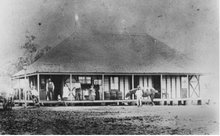I’ve been dipping into The Best Australian Essays 2002. Why 2002 you ask? Well that’s what the library was selling – maybe 2002 wasn’t the finest vintage or that year, everyone read Nora Roberts instead. Anyway, I’ve found a couple of interesting essays that have provoked thought for me. It’s amazing how when you are working on a project everything becomes grist for your mill.
Nadia Wheatley wrote about the difference between hagiography (writing history) and fiction in the context of writing a biography of Charmian Clift. In her essay entitled “Lies and Silences” she writes about how omissions in biographies and histories indicate “areas of failure” on the part of the writer, that is, things they just don’t know, whereas for a novelist, such gaps are “rejection of extraneous material” in service of plot and characterisation.
This is important for me, because having been trained as an academic historian, I sometimes struggle with wanting to explain every aspect of what I am writing and footnote every fact. This doesn’t make for very smooth or interesting storytelling.
I can remember in graduate school taking an American history seminar and being told by the lecturer to “get over” my obsession with method. Coming from a mass communication background, we were trained to constantly justify ourselves as social scientists rather than journalists – part of the tension that makes most communication departments dysfunctional. He wanted me to just tell the story. In my department, at the postgraduate level, you were barely able to admit that there was a story to tell – narrative and discourse were dirty words. For undergraduates, it was all about telling stories and news gathering.
In another essay Don Watson (speechwriter and wit extraordinaire) discussed Geoffrey Blainey’s thesis of the tyranny of distance being the determining factor in Australian history. Of interest to me was the idea that migrants huddled together in fear of the great open spaces. Of course, as Watson argues, this ignores psychological, social and emotional factors but it is always useful to have a grand theory.
And finally, Drusilla Modjeska suggests the idea that mothers work on their art with “an intensity that knows what it is to be interrupted” and that this intensity is somehow incorporated into their work. Writing this with my restlessly sleeping son on my lap, I hope this is the case.
Subscribe to:
Post Comments (Atom)

No comments:
Post a Comment